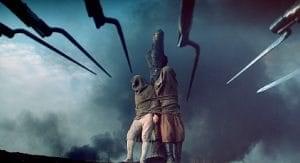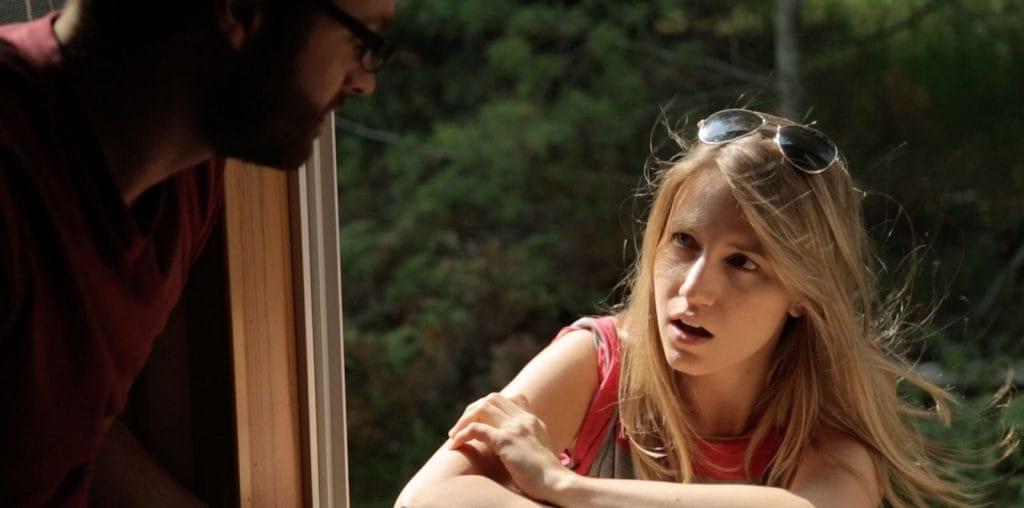
Translating a novel into a film is just as delicate and imperfect a process as translating one language into another, if not more so. In both of these translations, meaning is inevitably lost; it can’t be helped. This is because novels are a writer’s medium, so when the story is separated from its dictator and given to a republic of filmmakers, it becomes chaotic and unwieldy. To try and adapt Leo Tolstoy’s monumental novel, “War and Peace,” into a film would be ridiculous.
Somehow, Sergei Bondarchuk did just that in 1966, though he had to stretch the meaning of film to its absolute limits. His seven-hour War and Peace, while still abridging much, manages to transport the majesty and humanity of Tolstoy’s original story to celluloid remarkably unscathed. The runtime aside, the film is epic on a scale that rises to match the deserved reputation of its source material. If you have the gonads to rewrite Tolstoy for a new generation and a new medium—and do it well—restraint shouldn’t be part of the plan. By the end of the film’s first chapter, when the camera zooms out from the battlefield to show a bird’s eye view of war—a swirling hurricane of gun smoke and scattered bodies, some moving and some not—it becomes obvious that nothing is being held back.
For context, it should be noted that adapting Tolstoy’s novel faithfully is virtually impossible since much of it is not narrative, but philosophy. Tolstoy interrupts your regularly scheduled programming to offer his opinions on how history and war are misinterpreted. For Tolstoy, history was too often viewed as being dragged along by “important people,” such as Napoleon Bonaparte, as opposed to being the result of innumerable variables that are impossible to define, but which mostly include “nonimportant people.” When it comes to war, Tolstoy believed that military science and tactics were ultimately meaningless and that the differentiating factor between a winning army and a losing army is spirit. While Tolstoy doesn’t walk on-screen like Rod Serling and explain such things, these ideas are still prevalent in the movie, especially through Andrei (Vyacheslav Tikhonov).

“…military science and tactics were ultimately meaningless and that the differentiating factor between a winning army and a losing army is spirit.”
Speaking of Andrei, one of the reasons the book is so highly respected is its ability to scale its perspective from tracing humankind through history as a singular mass, all the way down to the petty feelings and mixed-up ideas that make up the day-to-day lives of individuals. Many of the film’s best moments are the strange, intimate, mystical, and often funny moments that occur in a broader context that would cause some to mistakenly deride them as irrelevant.
In the chaos of battle, there is a moment when Rostov (Oleg Tabakov), an impulsive 20-something who joined the military for adventure and glory, gets separated from his army. In the distance, he sees French soldiers approaching and doesn’t immediately process that they’re his enemy. When it occurs to him that they might shoot him, he thinks, without irony, “Me, whom everybody loves so?” In the middle of a massive battle between Russia and Napoleon’s France, which has worldwide ramifications, everything stops so that we may hear the naïve thoughts of a glorified boy. Moments like this are what the film is predicated on, and why it’s so emotionally powerful.
While we’re still talking about characters, it’s probably important to mention the three leads. Along with Andrei, there is Pierre (Sergei Bondarchuk) and Natasha (Lyudmila Saveleva). All three are searching for happiness, though none are exactly sure how it looks. What sets Andrei apart is that he’s the only one who is prepared to find nothing. At different points, both Andrei and Pierre fall in love with Natasha, perhaps because her passion and girlishness are uplifting in a world of pretentious soirees and senseless fighting. Andrei and Natasha’s characters, in particular, are among the film’s best. Natasha lives on the outskirts of war, but, much like Rostov, her brother, her inner struggles are of a more intimate variety than circumstances call. Andrei’s intellectual journey remains one of the story’s most engaging threads. His defining moment comes early, when—normally of a cold disposition—he is spurned by adrenaline to pick up a flag in the middle of battle and charge at the enemy, but he’s immediately shot. As he lays on the ground, surrounded by motion and noise, he notices the sky for the first time in his life. Andrei’s character doesn’t stay the same, nor does he have an arch. He is in a state of continual transformation, as we all are.

“…some of the most awe-inspiring war sequences I’ve ever seen, both in terms of cinematography and the sheer number of extras that are on-screen at once.”
Where the film flubs the story a bit is with Pierre, whom Tolstoy wrote as an analog for himself (think of Levin in “Anna Karenina”). In the book, Pierre’s search for meaning is more of an internal pilgrimage than Andrei’s—a search for God’s truth, rather than a truth—but the film’s abridgment robs us of most of this. We see him begin as an awkward frat boy of sorts and we see where he ends up, but his story feels choppier than Andrei’s or Natasha’s. While it doesn’t affect the overall quality of the film, the omission of Napoleon’s best material is somewhat disappointing.
The search for internal peace is great, but what about the war? This film has some of the most awe-inspiring war sequences I’ve ever seen, both in terms of cinematography and the sheer number of extras that are on-screen at once. True to Tolstoy’s intentions, Bondarchuk presents the battles both from the sky and from the ground. With spurts of gun smoke floating across the battlefield like little clouds and the formations moving like gelatinous shapes, the whole thing takes on a surreal quality. Modern audiences are used to seeing the visceral horror of war, but War and Peace shows the strangeness of it all. In addition to the gorgeous, surprisingly colorful photography, Bondarchuk employs many experimental flourishes, such as reverse motion, distorted lenses, and black and white photography, just to name a few. With the fantastic new restoration from Janus Films, it’s become clearer than ever that these images are among the most stunning ever put to film. Never has a movie made me angry I didn’t speak Russian, so I wouldn’t have to divert my eyes to the subtitles continually.
“Epic” is too small a word to accurately describe Bandarchuk’s War and Peace. Epic intimacy is much closer to the point, for few films have been able to serve the audience both unbelievable spectacle and rewarding introspection, which don’t only tolerate each other’s existence, but are one and the same. It may not quite be able to wrap its arms around the breadth of human experience that Tolstoy felt compelled to write down 150 years ago, but what movie could?

War and Peace (1967) Directed by Sergei Bondarchuk. Written by Sergei Bondarchuk and Vasily Solovyov. Starring Sergei Bondarchuk, Ludmila Savelyeva, Vyacheslav Tikhonov, Boris Zakhava, Anatoly Ktorov, Antonina Shuranova, Oleg Tabakov, Viktor Stanitsyn, Kira Golovko, Irina Skobsteva, Vasily Lanovoy, Irina Gubanova, Oleg Yefremov.
10 out of 10 stars


Brilliant movie, my all-time favorite, captures Tolstoy’s novel perfectly and fully. Unbelievable accomplishment by Sergie Bondarchuk as star, director, and co-writer.